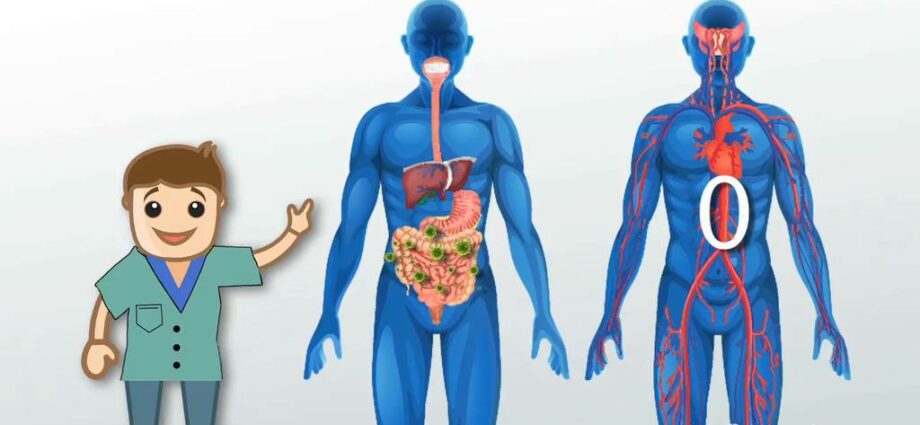Contents
Bacteremia: definition, causes and symptoms
Bacteremia is defined by the presence of bacteria in the blood. It can be the result of ordinary acts such as brushing teeth, dental treatment or medical procedures, or it can be caused by infections such as pneumonia or urinary tract infection. Usually, a bacteremia is not accompanied by any symptoms, but sometimes bacteria accumulate in certain tissues or organs and are responsible for serious infections. People at high risk of complications from bacteremia are treated with antibiotics before certain dental treatments and medical procedures. If bacteremia is suspected, the empirical administration of antibiotics is recommended. Treatment is then adjusted based on the results of culture and sensitivity tests.
What is bacteremia
Bacteremia is defined by the presence of bacteria in the bloodstream. Blood is in fact a normally sterile biological fluid. The detection of bacteria in the blood is therefore a priori abnormal. Bacteremia is diagnosed by a blood culture, that is to say the cultivation of circulating blood.
The average age of patients with bacteremia is 68 years. Most bacteremia is mono-microbial (94%), that is to say due to the presence of a single type of bacteria. The remaining 6% are polymicrobial. The main germs isolated, in the event of bacteremia, are Escherichia coli (31%) and Staphylococcus aureus (15%), and 52% of bacteremias are of nosocomial origin (enterobacteria, Staphylococcus aureus).
What are the causes of bacteremia?
Bacteremia can be caused by something as harmless as brushing your teeth vigorously or by a serious infection.
Non-pathological bacteremia
They correspond to brief discharges of bacteria in the blood observed as a result of ordinary activities in healthy people:
- during digestion bacteria can enter the bloodstream from the intestine;
- after vigorous toothbrushing, during which bacteria living in the gums are “pushed” into the bloodstream;
- after certain treatments such as tooth extraction or scaling, during which the bacteria present in the gums can be dislodged and enter the bloodstream;
- after digestive endoscopy;
- after placing a genitourinary catheter or an intravenous catheter. Although aseptic techniques are used, these procedures can migrate bacteria into the bloodstream;
- after injecting recreational drugs, because the needles used are usually contaminated with bacteria, and users often do not clean their skin thoroughly.
Pathological bacteremia
They correspond to a generalized infection which is characterized by a massive discharge of bacteria into the blood from a first infectious focus, following pneumonia, a wound or even a urinary tract infection. For example, surgical treatment of infected wounds, abscesses that is to say an accumulation of pus, and bedsores, can dislodge bacteria present on the infected area and cause bacteremia.
Depending on the pathophysiological mechanisms, bacteremia can be:
- intermittent for thromboembolic and endocarditic bacteremia: the discharges are then irregular and repeated;
- continuous for bacteremia of lymphatic origin such as brucellosis or typhoid fever.
Having a joint prosthesis or a prosthesis, or having a problem with the heart valves, increases the risk of persistent bacteremia or the risk that it is the cause of problems. .
What are the symptoms of bacteremia?
Usually, bacteraemia caused by ordinary events, such as dental treatment, are rarely responsible for infection, as only a small number of bacteria are present and these are quickly eliminated by the body itself. , thanks to the phagocytes-mononuclear system (liver, spleen, bone marrow), or in other words, thanks to our immune system.
These bacteremia are then generally temporary and are not accompanied by any symptoms. These bacteremia, without consequence for the vast majority of individuals, may however present a risk in the event of valvular disease or severe immunosuppression. If the bacteria are present long enough and in sufficient quantity, especially in patients with a weakened immune system, the bacteremia can cause other infections and sometimes trigger a severe generalized response or sepsis.
Bacteremia caused by other conditions can cause fever. If a person with bacteremia has the following symptoms, they are probably suffering from sepsis or septic shock:
- persistent fever;
- increased heart rate;
- chills ;
- low blood pressure or hypotension;
- gastrointestinal symptoms such as abdominal pain, nausea, vomiting and diarrhea;
- rapid breathing or tachypnée ;
- impaired consciousness, she is probably suffering from sepsis or septic shock.
Septic shock develops in 25 to 40% of patients with significant bacteremia. Bacteria that are not eliminated by the immune system can accumulate in different sites of the body, causing infections in:
- tissue that covers the brain (meningitis);
- the outer envelope of the heart (pericarditis);
- cells lining the heart valves (endocarditis);
- desos (osteomyelitis);
- joints (infectious arthritis).
How to prevent and treat bacteremia?
Prevention
Some people such as the following are at high risk of complications from bacteraemia:
- people with artificial heart valves;
- people with joint prostheses;
- people with abnormal heart valves.
These are usually treated with antibiotics before any procedure that may be responsible for bacteremia such as certain dental care, medical procedures, surgical treatment of infected wounds etc. Antibiotics can thus prevent bacteremia and consequently the development of infections and sepsis.
Treatment
In case of suspicion of bacteremia, it is recommended to administer antibiotics empirically, that is to say without waiting for the identification of the microorganism in question, after having taken samples for culture of the sites of origin. potential. The rest of the treatment consists of:
- adjust antibiotics based on results of cultures and susceptibility testing;
- drain the abscesses surgically, if there is an abscess;
- remove all internal devices that may be the suspected source of bacteria.










